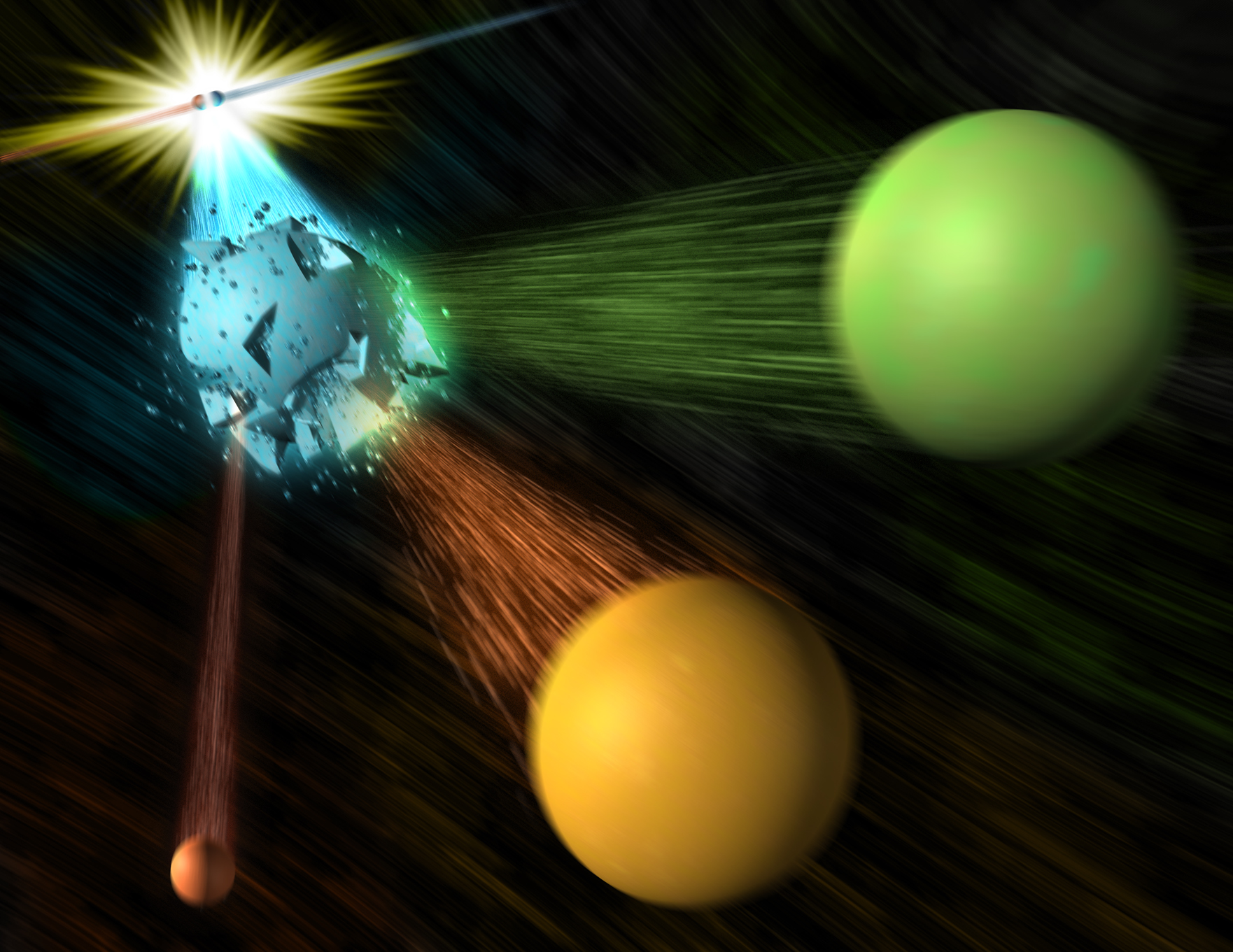BaBar, a detector built to measure the decay of B mesons and their anti-particles, B-bar mesons and named after those particles, weighed 1,200 tons, and was 6 meters long and 6 meters in diameter.
The new data show that a particular type of particle decay happens more often than the Standard Model says it should, according to results presented at the 10th annual Flavor Physics and Charge-Parity Violation Conference in Hefei, China.
The data refers to the B-bar meson that decays into a D meson, an anti-neutrino and a tau lepton (³B to D-star-tau-nu²). This particular decay of a B meson should, theoretically, only happen in one in every 100 cases, but the new results from BaBar show it is happening too often. While the level of certainty of the difference, or excess, (3.4 sigma in statistical language) is not enough to claim a break from the Standard Model, the results are a potential warning sign that something is amiss and could impact existing theories.

BaBar. Credit: Peter Ginter, SLAC 2002
“The excess over the Standard Model prediction is exciting”, said BaBar spokesperson Michael Roney, Professor at the University of Victoria in Canada. “The results are significantly more sensitive than previously published studies of these decays. But before we can claim an actual discovery, other experiments have to replicate it and rule out the possibility this isn’t just an unlikely statistical fluctuation.”
The BaBar experiment collected data from 1999 to 2008 and was designed to explore various mysteries of particle physics, including why the universe contains matter, but no antimatter. Data from the collaboration helped confirm a matter-antimatter theory for which two researchers won the 2008 Nobel Prize in Physics. Around 600 physicists and engineers from ten countries participated.
In this conceptual art, an electron and positron collide, resulting in a B meson (not shown) and an antimatter B-bar meson, which then decays into a D meson and a tau lepton as well as a smaller antineutrino. Credit: Greg Stewart, SLAC National Accelerator Laboratory
“If the excess decays shown are confirmed, it will be exciting to figure out what is causing it," said BaBar physics coordinator Abner Soffer, associate professor at Tel Aviv University. “Other theories involving new physics are waiting in the wings, but the BaBar results already rule out one important model called the Two Higgs Doublet Model. We hope our results will stimulate theoretical discussion about just what the data are telling us about new physics.”
The researchers also hope their colleagues in the Belle collaboration, which studies the same types of particle collisions, see something similar. "If they do, the combined significance could be compelling enough to suggest how we can finally move beyond the Standard Model”, said Roney.
Citation: Submitted for publication in Physical Review Letters. arXiv preprint: Measurement of CP Asymmetries and Branching Fractions in Charmless Two-Body B-Meson Decays to Pions and Kaons, The BABAR Collaboration DOI: arXiv:1206.3525v1 [hep-ex]





Comments